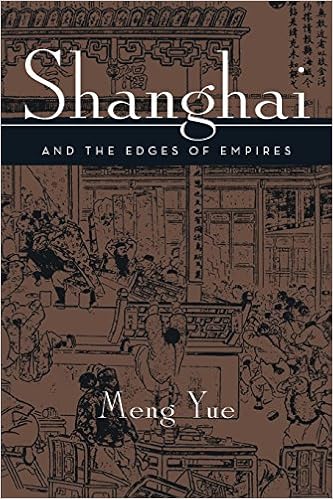
By Catie Marron
During this very important assortment, eighteen popular writers, together with David Remnick, Zadie Smith, Rebecca Skloot, Rory Stewart, and Adam Gopnik evoke the spirit and historical past of a few of the world’s so much famous and critical urban squares, observed by way of illustrations from both extraordinary photographers.
Over 1/2 the world’s electorate now reside in towns, and this quantity is swiftly turning out to be. on the middle of those municipalities is the square—the defining city public house because the sunrise of democracy in old Greece. every one sq. stands for a bigger subject in historical past: cultural, geopolitical, anthropological, or architectural, and every of the eighteen luminary writers has contributed his or her personal innate expertise, prodigious examine, and native knowledge.
Divided into 3 components: tradition, Geopolitics, heritage, headlined through Michael Kimmelman, David Remnick, and George Packer, this important anthology exhibits town sq. in new gentle. Jehane Noujaim, award-winning filmmaker, takes the reader via her go back to Tahrir sq. through the 2011 protest; Rory Stewart, diplomat and writer, chronicles a sq. in Kabul which has come and long gone numerous instances over 5 centuries; Ari Shavit describes the dramatic adjustments of important Tel Aviv’s Rabin sq.; Rick Stengel, editor, writer, and journalist, recounts the facility of Mandela’s selection of the Grand Parade, Cape city, a tremendous marketplace sq. to talk to the realm correct after his free up from twenty-seven years in criminal; whereas award-winning journalist Gillian Tett explores the concept that of the digital sq. within the age of social media.
This assortment is a crucial lesson in historical past, a portrait of the area we are living in this day, in addition to an workout in brooding about the longer term. Evocative and compelling, urban Squares will switch how you stroll via a urban.
Read Online or Download City Squares: Eighteen Writers on the Spirit and Significance of Squares Around the World PDF
Similar urban books
The tiny state of Kuwait grabbed the world's awareness throughout the Gulf struggle, within which its traditional petroleum source turned the envy of its neighboring nation of Iraq. yet Kuwait's historical past is going again lengthy prior to any oil was once stumbled on, again to Mesopotamian settlements as early as 3000 BCE. perfect for top university scholars in addition to common readers, historical past of Kuwait deals a complete examine how one of these small nation might, primarily, rule the realm with only one ordinary source.
Shanghai and the Edges of Empires
Even prior to the romanticized golden period of Shanghai within the Thirties, the famed Asian urban used to be notable for its distinctiveness and East-meets-West cosmopolitanism. Meng Yue analyzes a century-long shift of urbanity from China’s heartland to its shore. throughout the interval among the decline of Jiangnan towns akin to Suzhou and Yangzhou and Shanghai’s early twentieth-century upward push, the overlapping cultural edges of a failing chinese language royal order and the encroachment of Western imperialists converged.
With the arrival of AIDS, the proliferation of gangs and medication, and the uneasy sensation that enormous Brother is really gazing us, the darkish facet of city dwelling appears to be like overshadowing the brighter aspect of delight, liberation, and chance. The Urbanization of Injustice chronicles those bleak city pictures, whereas taking to job exclusivist politics, globalization conception, and superficial environmentalism.
City casual settlements or slums are becoming quickly in towns in sub-Saharan Africa. frequently, a sewer procedure isn't current and the commonly-used reasonably cheap onsite wastewater dealing with practices, regularly pit latrines, are usually unplanned, out of control and inefficient. for that reason, so much families cast off their untreated or in part handled wastewater on-site, producing excessive a great deal of meals to groundwater and streams draining those parts.
- Enhancing Urban Environment by Environmental Upgrading and Restoration
- Landownership and Residential Land Use in Urban Economies: Existence and Uniqueness of the Equilibrium
- The Cost of Implementing Agricultural Policies.
- Urban Public Housing in Northern Nigeria: The Search for Indigeneity and Cultural Practices in Design
- Conservation for Cities: How to Plan and Build Natural Infrastructure
- Urban Water Trajectories
Extra info for City Squares: Eighteen Writers on the Spirit and Significance of Squares Around the World
Sample text
The royal eye was intended to be felt everywhere, with only one pavilion on the place made markedly different from the rest. Placed on the center of the south side, and serving as a doorway to the rue St. Antoine, was one royal edifice where the king, presumably, could oversee his creation: the Pavillon du Roi. After the assassination of Henri IV by a crazed fanatic Catholic in 1610, things quickly began to change. Though conceived as a concert of buildings, the ateliers of the Place Royale were built by individual speculation, and it soon became apparent to the twenty-four actual investors, in a manner eerily contemporary, that they were worth more as residences than as manufacturing spaces.
The Char-Chatta disappeared. One hundred and thirty years later, in 1971, an East German foreigner chose to emulate Ali Mardan by building another square. This time he planned to place the square not in the commercial bazaar but in the residential neighborhood of Murad Khane. Delighted by the new plan, the government issued a forcible acquisition order for the whole area, paid some limited compensation, and began by demolishing two traditional courtyard houses in the heart of the district. This demolition was supposed to be only the beginning.
There were courts outside temples and royal houses, and some wide processional streets. C. did squares develop. In ancient Greek, the word “agora” is hard to translate. In Homer it implied a “gathering” or “assembly”; by the time of Thucydides it had come to connote the public center of a city, the place around which the rest of the city was arranged, where business and politics were conducted in public—the place without which Greeks did not really regard a town or city as a town or city at all; rather, it was, as Pausanias, the second-century writer roughly put it, a sorry assortment of houses and ancient shrines.



